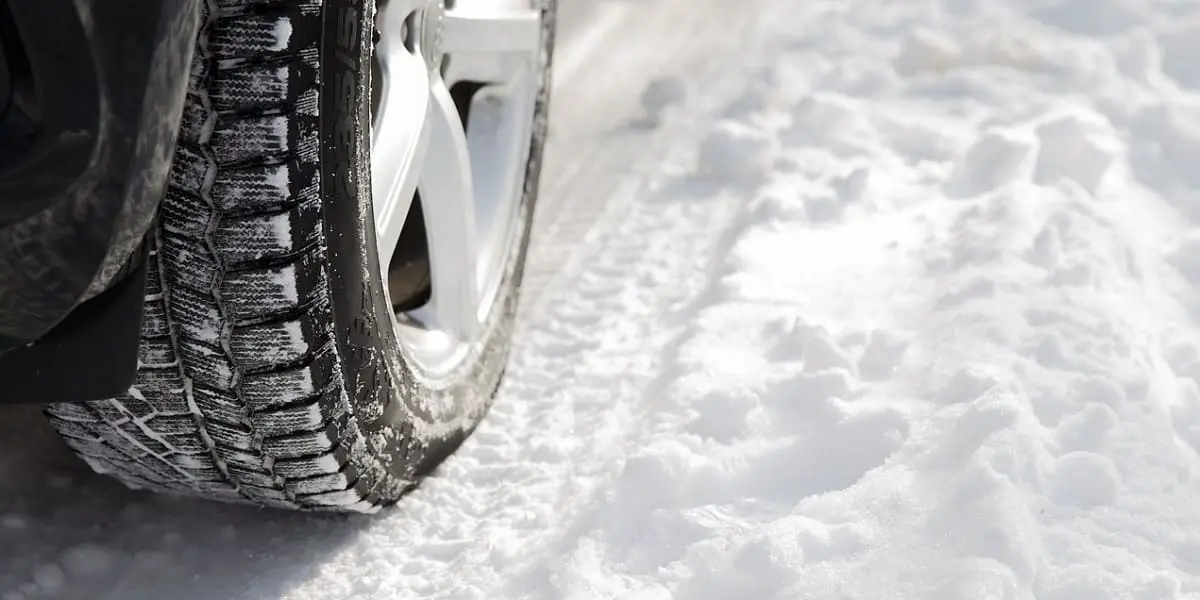Content
If you live in a region where snow and ice regularly mark the winter, you need to be able to identify a snow tire quickly.
These special tires guarantee your safety and that of other drivers during the cold months. But how can you tell the difference between a winter tire and a standard tire? And how can you spot the features that indicate your car is fitted with the right winter tires?
We invite you to browse through this article to find out how you can easily spot a snow tire. We’ll also give you tips on choosing the right winter tire for your vehicle and driving style.
What are the special features of snow tires?
Specially designed for safe winter driving, snow tires offer optimum grip and roadholding on snow and ice.
To easily distinguish them from standard tires, just look for these three key indicators: the M+S marking, the snowflake emblem and a specific groove structure.
M+S (Mud+Snow) marking
The M+S marking, which stands for “Mud and Snow”, is printed on the tire sidewall and indicates that the tire can be used on these surfaces.
However, in the absence of official testing or approval, this marking does not guarantee maximum efficiency in the event of winter frost. It is therefore advisable to complete this check by looking for the snowflake symbol to ensure maximum reliability.
Snowflake symbol (3PMSF)
More reliable, the snowflake symbol surrounded by three mountain peaks (3PMSF) indicates that the tire has passed a recognized European snow performance test.
Thanks to this symbol, you can be sure that your tire will have more grip and efficiency on snowy or icy surfaces than a standard tire. What’s more, its use may be required by law in certain mountainous areas, where the B26 sign is in force.

Special grooves for optimum grip
The tread of snow tires is characterized by deeper and wider grooves than those of ordinary tires.
This configuration facilitates the evacuation of water, mud and slush, while preventing aquaplaning. It also improves grip on snow and ice, thanks to sipes that act like small teeth.
Don’t forget that the tread is generally directional, which implies a specific direction of rotation when fitting.
What are the characteristics of snow tires?
Mastering these technical characteristics is essential to choosing the right snow tire for your vehicle and driving style. Let’s take a look at three key factors: tread compound, siping structure and sidewall information.
Tread compound for cold conditions
The tread compound in direct contact with the road is made of rubber enriched with silica and other additives to improve grip.
Unlike standard tires, whose rubber hardens and can lose its grip below 7°C, snow tires remain supple and elastic even in extreme cold.
Increased silica content not only ensures optimum resistance to the cold, but also reduces fuel consumption.
Siping structure
The sipes, fine incisions running across the tread, create ridges that improve grip on snow and ice.
More numerous, wider and deeper than on conventional tires, sipes come in a variety of shapes and positions. Z-shaped sipes improve stability when cornering, while V-shaped sipes help evacuate water and slush.
Sidewall information
In addition to the above symbols, the tire sidewall contains valuable information such as tire dimensions, load index, speed rating, date of manufacture, direction of rotation and winter specifications.
This information verifies compatibility with the vehicle, ensures compliance with safety and performance standards, and indicates the ideal time to change tires. It is essential to examine them carefully before buying and fitting snow tires.
Practical advice for choosing your snow tires
Learning to identify a snow tire is one thing, but how can you be sure you’re choosing the right model? To avoid any mistakes when buying and using your snow tires, here are a few essential tips: the importance of consulting a specialist, pitfalls to avoid when buying tires, and methods for evaluating the effectiveness of your snow tires.
Consult a professional
The first tip is to call in a professional to choose and install your tires. He or she will guide you towards the type, size, brand and model of snow tires perfectly suited to your car, your frequency of use and your budget.
He’ll also inform you about the laws in force in the region where you live, and any additional equipment you may need, such as chains or snow socks.
Calling in a professional ensures that your snow tires are fitted correctly, with the right direction of rotation, pressure and balance.
What are the mistakes to avoid when buying snow tires?
Our second tip concerns common mistakes to avoid when buying snow tires. First of all, don’t neglect the size specifications, as well as the load and speed ratings mentioned on your summer tires. This information is important to ensure the compatibility and safety of your snow tires.
Next, make sure you fit snow tires on all the wheels of your vehicle, as fitting different tires on the drive and steer wheels can lead to loss of control during maneuvers such as braking or cornering, due to differences in grip and braking distance.
Finally, change your snow tires before they become too worn. We recommend replacing them when the grooves reach a depth of 4 mm to maintain optimum performance, compared with 1.6 mm for summer tires.
How to check the performance of a snow tire?
Our third tip is to check the performance of your snow tires before driving on snow-covered or slippery surfaces. There are several techniques for testing your tires, depending on the type of surface and weather conditions.
On dry, cold ground, test the softness of the rubber by pressing down with your finger: a soft rubber indicates good adaptation to the ambient temperature.
On wet surfaces, check that water is evacuated behind the wheels to avoid the risk of aquaplaning.
Finally, on snow or ice, brake and take turns at low speed to test your tires’ grip. The absence of skidding will confirm good grip on these icy surfaces.
- Discover also
- Why consider buying an electric car?
